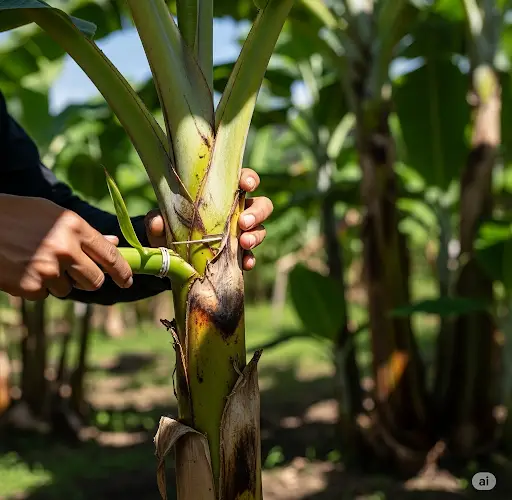Grafting is a widely used technique in rose cultivation, allowing gardeners to combine the best traits of two plants—typically joining a strong rootstock with a desirable flowering variety. While grafting requires care and precision, natural helpers like bananas are increasingly gaining attention for improving success rates and accelerating the healing process.
Bananas aren’t just a nutritious snack for humans—they’re also a surprisingly effective tool in the garden. Packed with natural enzymes, minerals, and plant hormones, bananas can support the grafting process in several important ways. This article explores how bananas can be used when grafting roses and the science behind their effectiveness.
Why Use Banana in Rose Grafting?
When grafting any plant, the ultimate goal is to ensure that the scion (the part of the plant with the desired flowers) fuses successfully with the rootstock (the strong, disease-resistant root system). A successful graft requires good contact between the two parts, proper moisture retention, and hormone signaling to promote cell fusion and healing.
This is where bananas come in. Here’s why they help:
1. Rich in Plant Hormones
Bananas are naturally rich in auxins, plant hormones that regulate growth and cell elongation. Auxins play a key role in stimulating root and tissue development, which can speed up the healing process at the graft union.
2. Natural Moisture Retention
The soft, moist texture of banana flesh helps keep the graft site from drying out—an important factor in grafting success. Moisture loss can delay healing or even kill the graft.
3. Nutrient Content
Bananas contain potassium, magnesium, and trace elements that support healthy tissue development. These nutrients don’t directly cause the graft to fuse but can strengthen the plant overall and aid in recovery.
4. Anti-Fungal Properties
Some gardeners believe bananas help protect the graft from infection due to their mild antifungal properties. While this is not scientifically proven, their use as a natural buffer seems to reduce the risk of mold or rot when used properly.
How to Use Banana When Grafting Roses
Using bananas in the grafting process is surprisingly simple. Here’s a step-by-step overview:
Materials Needed:
-
A healthy rootstock rose plant
-
A scion (cutting from the rose variety you want to graft)
-
A ripe banana (not overly mushy)
-
Sharp knife or grafting blade
-
Grafting tape or biodegradable wrap
-
Clean cloth or paper towel
Steps:
-
Prepare the Rootstock and Scion
Make a clean diagonal cut in the rootstock stem and a matching cut on the scion. The cuts must fit tightly together with maximum contact. -
Apply Banana Flesh to the Graft Site
Cut a small slice of banana (about 2–3 cm thick). Place it between the rootstock and scion like a soft gasket or apply a thin smear of banana flesh directly onto the cut surfaces. This adds moisture and hormones directly where healing needs to occur. -
Join and Wrap
Fit the scion and rootstock together, sandwiching the banana in between if using a slice. Wrap the joint securely with grafting tape or cling film to hold everything in place and retain moisture. -
Cover and Wait
Keep the grafted plant in a warm, shaded location for 1–2 weeks. Avoid direct sun until you see signs of new growth, which indicates the graft has taken. -
Remove Wrapping Carefully
Once the scion shows signs of successful bonding and growth, gradually loosen and remove the wrapping to prevent girdling.
Tips for Best Results
-
Use ripe but firm bananas—too soft and they may ferment or rot.
-
Avoid excess banana material—a thin layer is better than an overly thick slice that could cause decay.
-
Sterilize all tools before cutting to reduce infection risk.
-
Check moisture levels regularly to ensure the graft remains hydrated without becoming soggy.
What to Expect After Grafting
If the graft is successful, new growth from the scion should appear within 10–20 days. The banana’s contribution is largely in the first stages, supporting moisture balance and delivering natural growth hormones.
Not every graft will succeed, even with banana help. However, many gardeners report higher success rates and faster healing times when using banana flesh as part of the process.
Final Thoughts
Using bananas as a natural aid in rose grafting is a creative and sustainable gardening technique. With their natural auxins, moisture content, and gentle texture, bananas help support graft healing without the need for synthetic rooting hormones or chemical adhesives. This simple kitchen-to-garden trick is especially appealing for organic gardeners and rose enthusiasts looking for an all-natural approach.
If you’re looking to experiment with rose grafting, try adding a banana to the mix—you may find it gives your grafts a healthy, fruitful head start.



